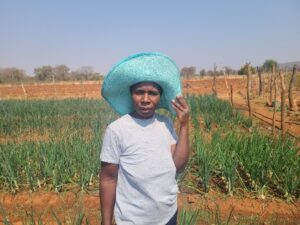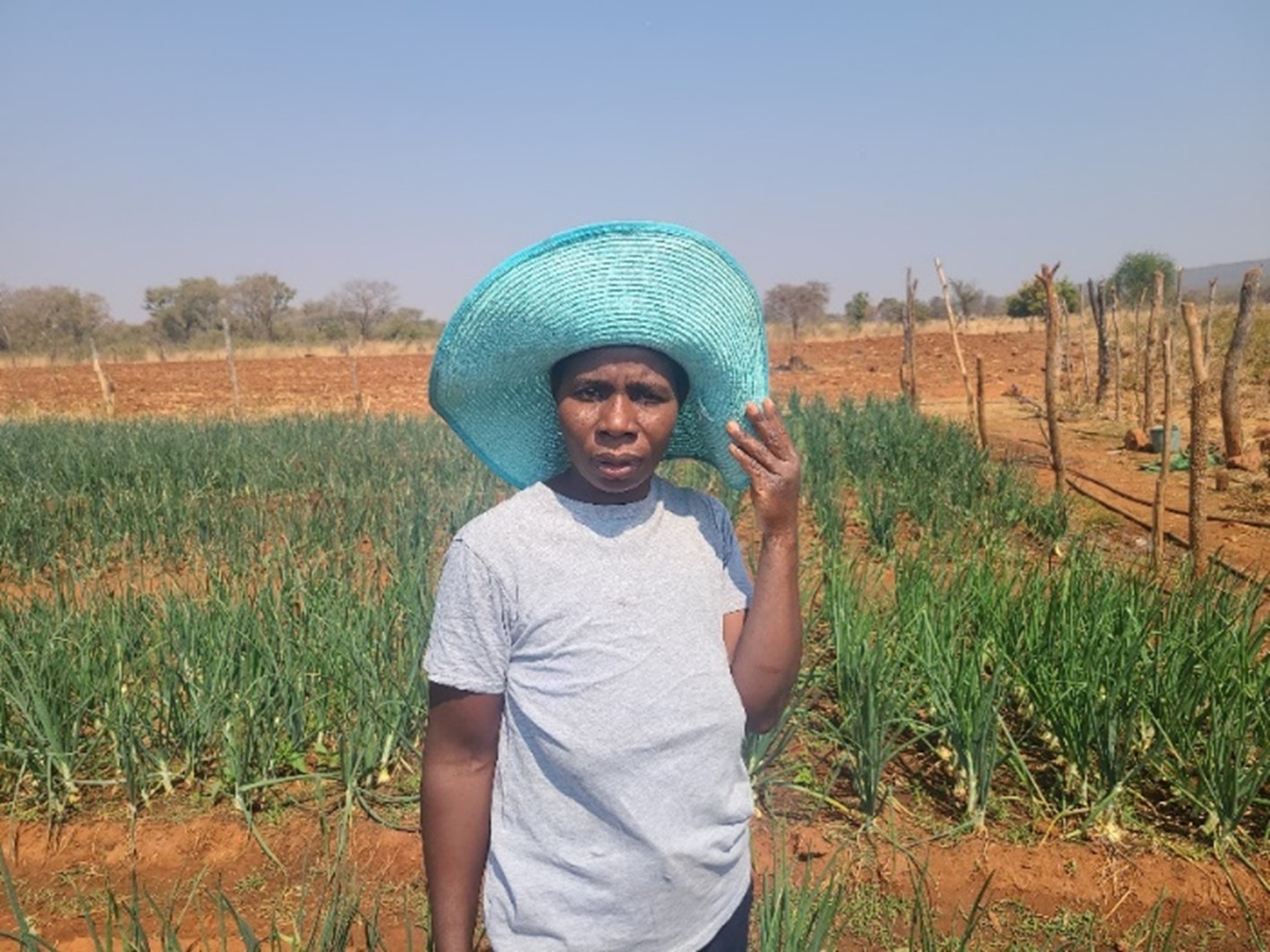
Meet Rachel Nhamo, a 37-year-old farmer from ward 7 in Chikomba District, who transitioned from subsistence farming to commercial agriculture prior joining the Jobs Creation Project. This project aims to empower individuals and groups through community development initiatives.
In 2021, Rachel received six modular business training under Manhize Kuwirirana Self Help Group , a Hand in Hand Zimbabwe supported group with funding from Hand in Hand Sweden. These trainings equipped her with essential skills and knowledge necessary for running a successful agricultural business. As a result, she ventured into horticulture and broiler production, marking a significant shift from her previous low-scale subsistence farming practices.
In her horticultural venture, she cultivates a variety of crops that are currently in high demand within the market such as onions, cabbages and tomatoes. Her monthly income from the sale of her leafy vegetables e.g covo and tsunga is around $700.
Rachel has planted 45,000 Capriccio onions. This variety is known for its good yield and marketability. She looks forward to harvesting them in October. Her anticipated revenue is USD 5625 00,00.
She has also 5,000 heads of Fabiola cabbage that are yet to be harvested mid-September which are to be sold at USD1 each. Her cabbages will give her a revenue of USD 5 000. Fabiola cabbage is appreciated for its quality and taste, making it a popular choice among consumers.
Additionally, Rachel has planted 4,000 heads of Chinese cabbage targeting a nearby Chinese mining company. These Chinese cabbages will be selling at USD2 .00 each, in turn give her a revenue of USD 8 000.00.
The combination of these crops not only diversifies her agricultural output but also mitigates risks associated with market fluctuations by ensuring that she has multiple products available for sale.
In addition to horticulture, Rachel has diversified her income streams by venturing into broiler production. Currently, she manages a batch of 50 birds that are sold locally. Broiler chickens are typically raised for meat production and have a relatively quick turnaround time from hatch to market weight, allowing Rachel to generate additional income of USD 150.00 alongside her horticultural sales.
This financial success indicates not only effective management of her enterprises but also the potential for growth and expansion within her agricultural activities.
The crops Rachel grows exhibit significant market demand, which is crucial for the sustainability of her business model. By focusing on high-demand crops like onions and cabbages while also engaging in poultry farming, she positions herself favourably within the local agricultural economy. The ongoing savings efforts within her SHG further enhance the sustainability aspect by providing a safety net and resources for future investments or unforeseen challenges.

